
How to Use TOF Sensor: Examples, Pinouts, and Specs
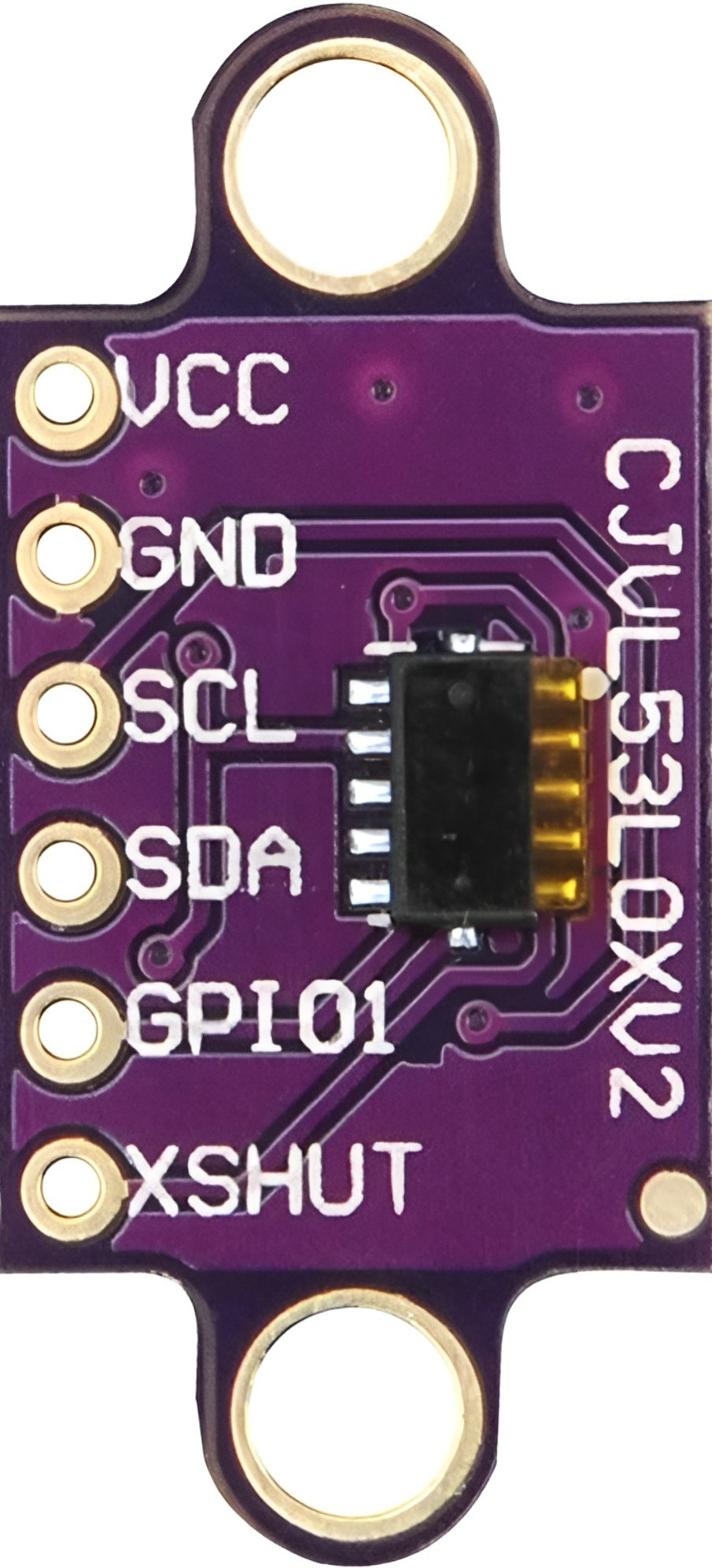
 Design with TOF Sensor in Cirkit Designer
Design with TOF Sensor in Cirkit DesignerIntroduction
The Adafruit VL53L0XV2 is a Time-of-Flight (TOF) sensor that measures the distance to an object by calculating the time it takes for a light pulse to travel to the object and return. This sensor provides highly accurate distance measurements and is ideal for applications requiring precise proximity sensing.
Explore Projects Built with TOF Sensor
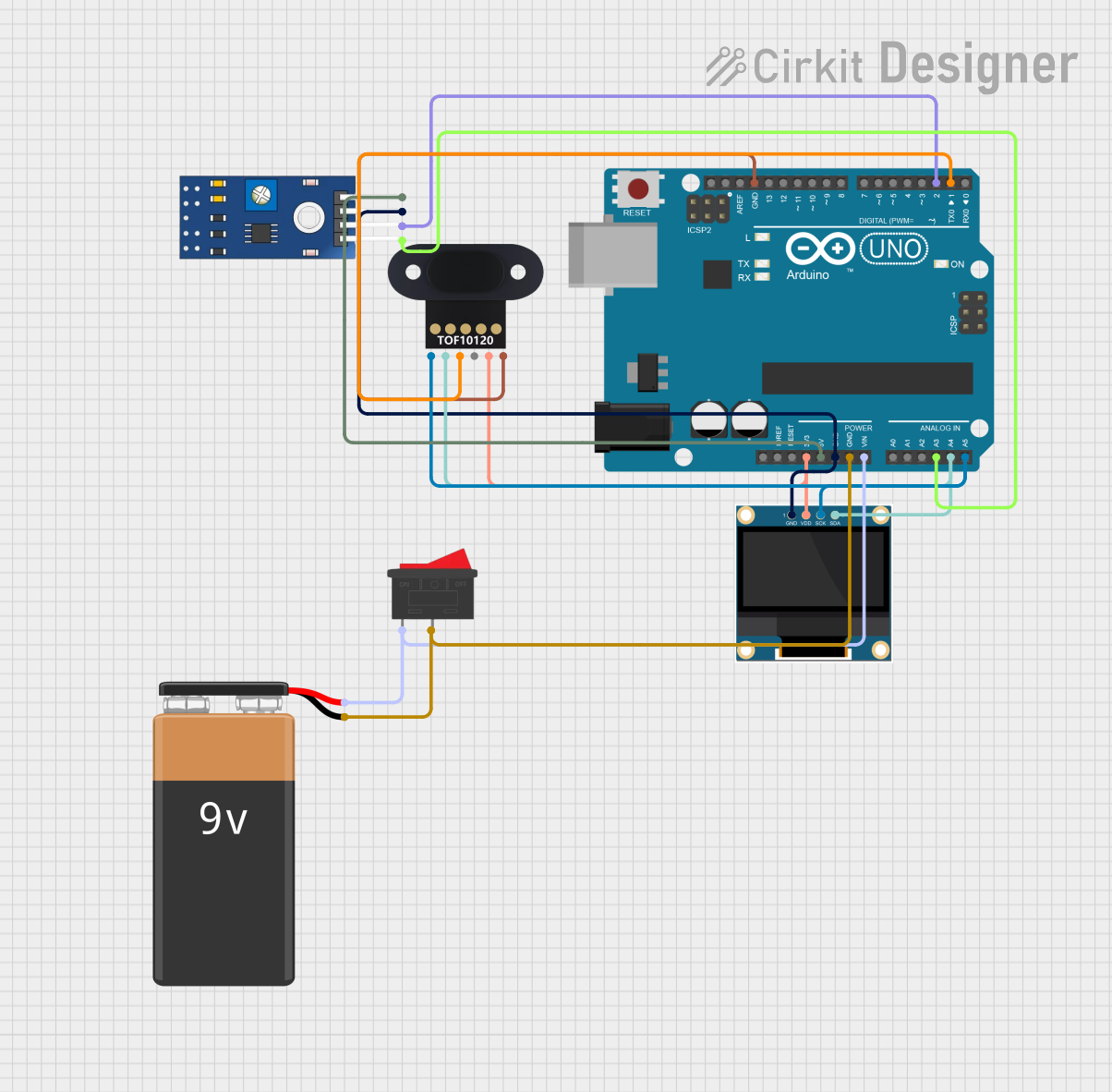
 Open Project in Cirkit Designer
Open Project in Cirkit Designer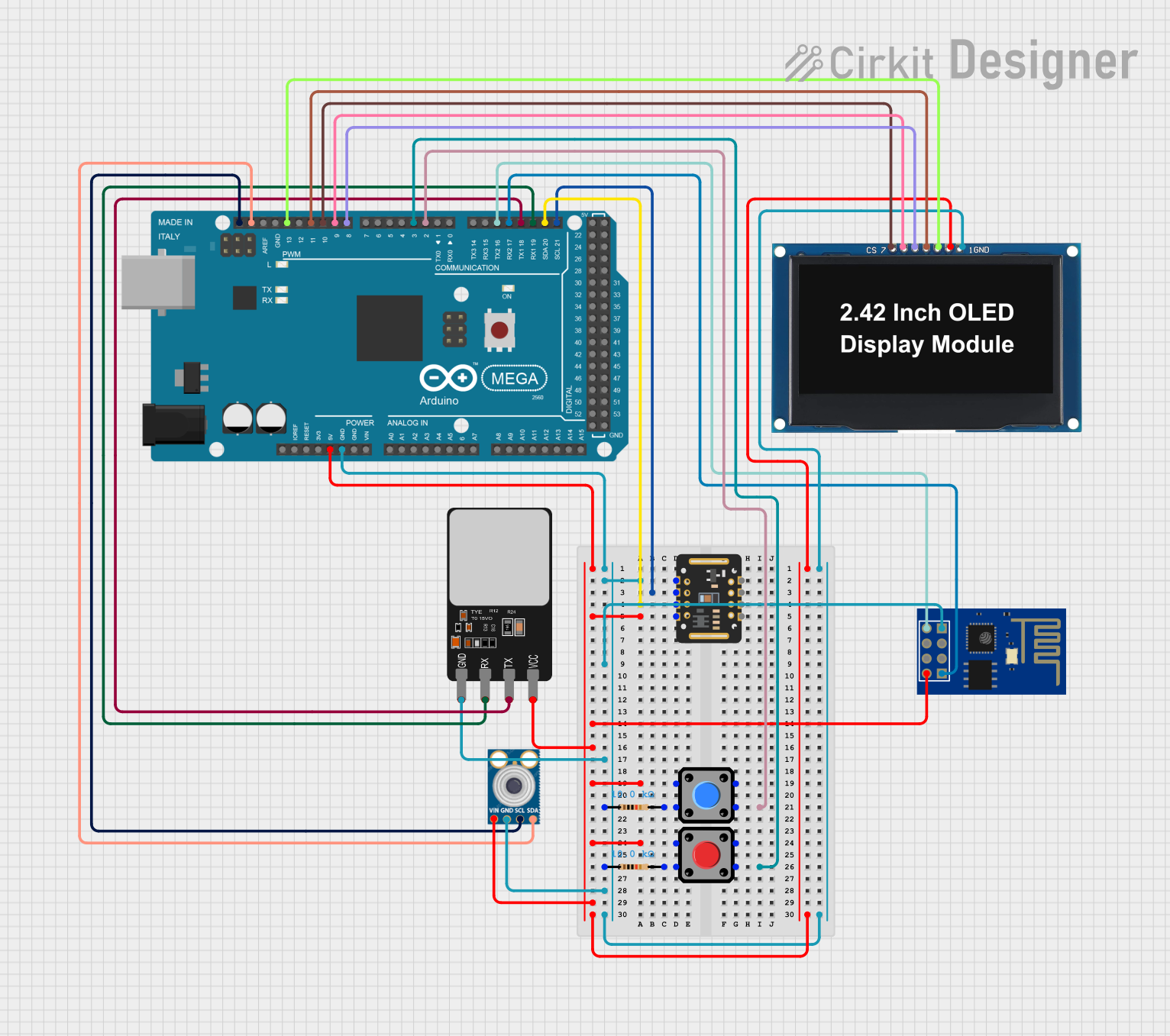
 Open Project in Cirkit Designer
Open Project in Cirkit Designer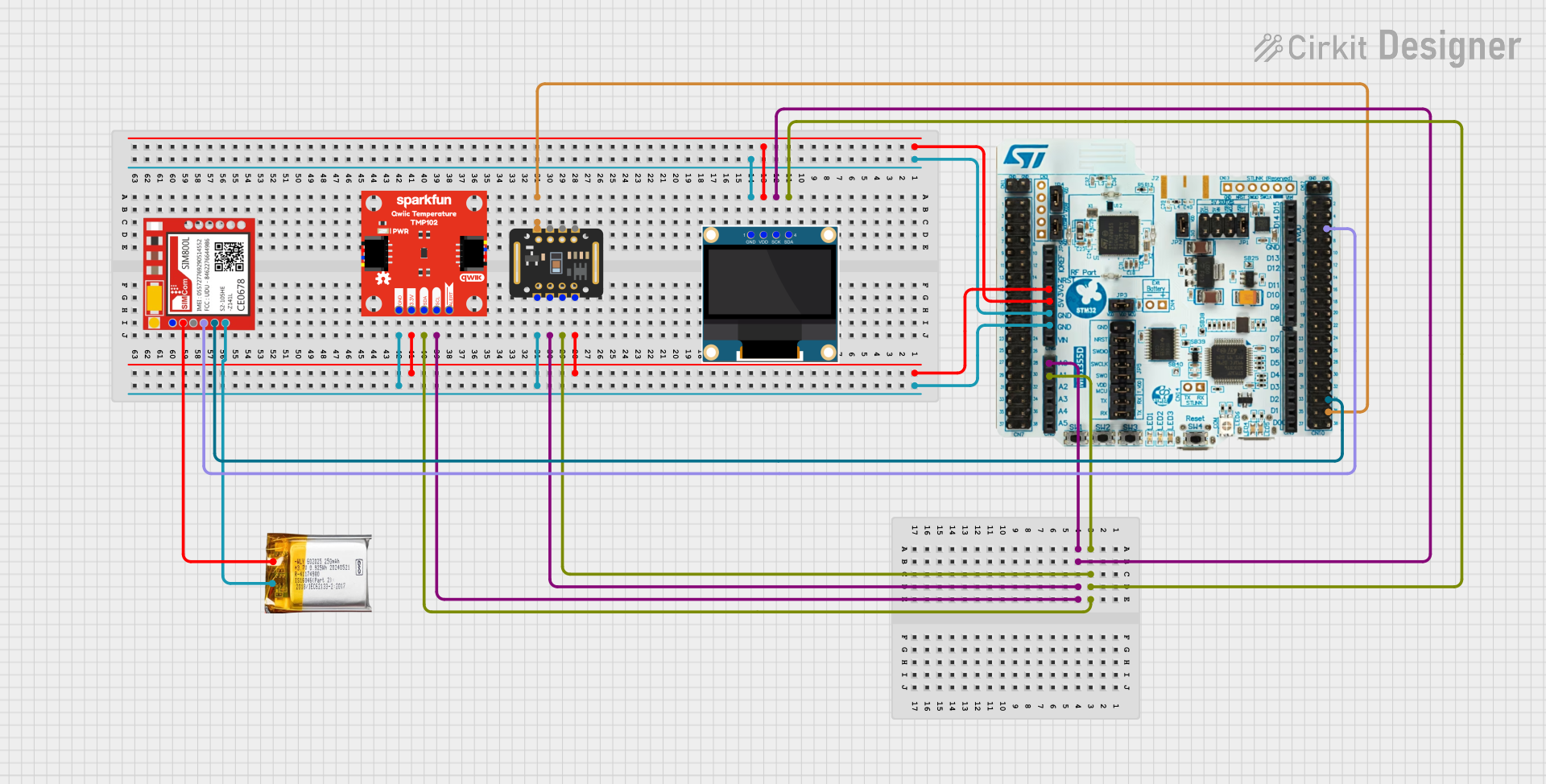
 Open Project in Cirkit Designer
Open Project in Cirkit Designer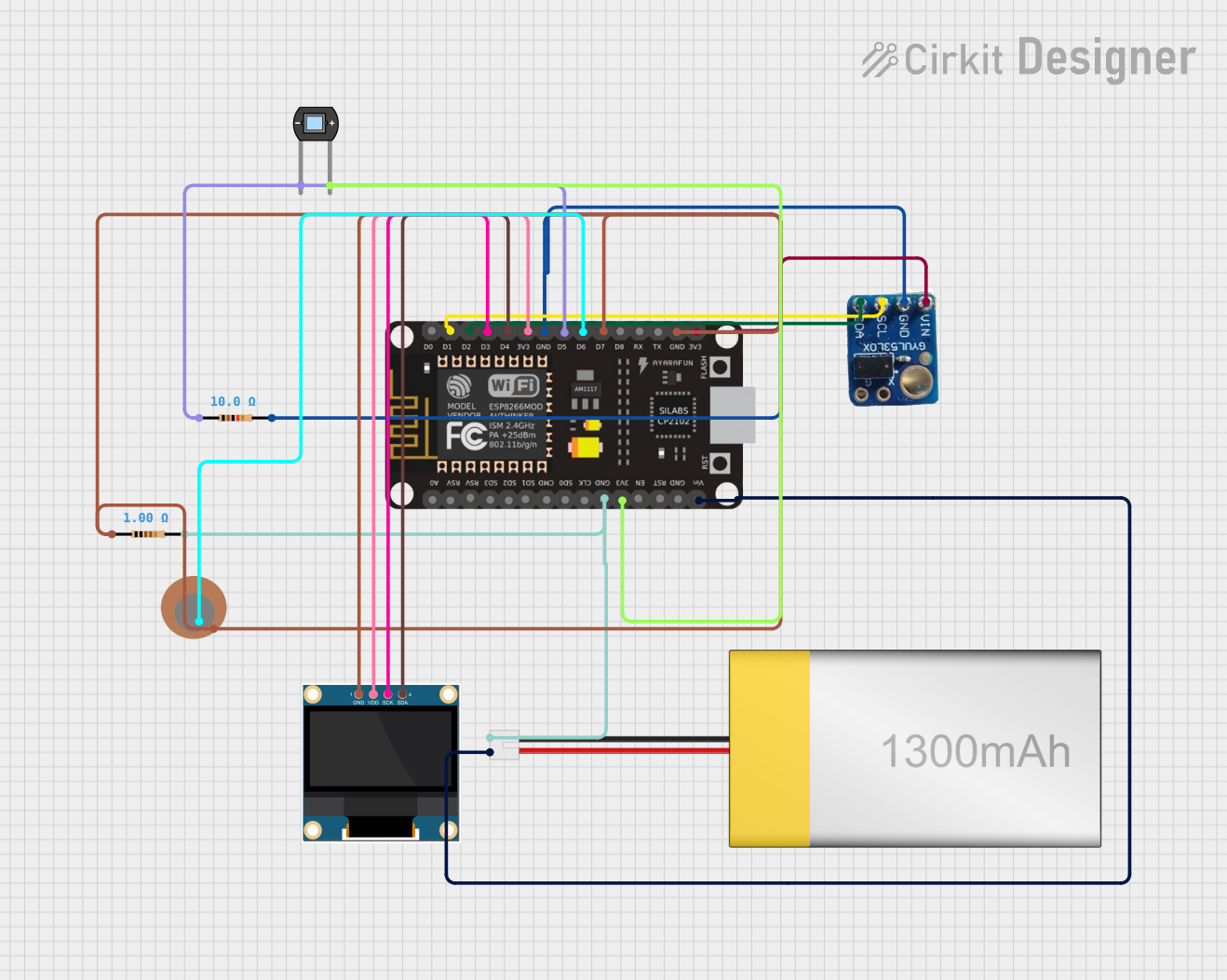
 Open Project in Cirkit Designer
Open Project in Cirkit DesignerExplore Projects Built with TOF Sensor

 Open Project in Cirkit Designer
Open Project in Cirkit Designer
 Open Project in Cirkit Designer
Open Project in Cirkit Designer
 Open Project in Cirkit Designer
Open Project in Cirkit Designer
 Open Project in Cirkit Designer
Open Project in Cirkit DesignerCommon Applications
- Robotics for obstacle detection and navigation
- Gesture recognition systems
- 3D mapping and scanning
- Object detection in industrial automation
- Distance measurement in consumer electronics
Technical Specifications
The following table outlines the key technical details of the Adafruit VL53L0XV2 TOF sensor:
| Parameter | Value |
|---|---|
| Manufacturer | Adafruit |
| Part ID | VL53L0XV2 |
| Measurement Range | 30 mm to 2000 mm (2 meters) |
| Measurement Accuracy | ±3% |
| Operating Voltage | 2.6V to 3.5V |
| Communication Interface | I2C |
| I2C Address (Default) | 0x29 |
| Power Consumption | 20 mW (typical) |
| Operating Temperature | -20°C to +70°C |
| Dimensions | 21 mm x 18 mm x 3 mm |
Pin Configuration
The VL53L0XV2 sensor has the following pinout:
| Pin Name | Description |
|---|---|
| VIN | Power input (2.6V to 5V) |
| GND | Ground |
| SDA | I2C data line |
| SCL | I2C clock line |
| XSHUT | Shutdown pin (active low) |
| GPIO1 | Interrupt output (optional) |
Usage Instructions
Connecting the VL53L0XV2 to an Arduino UNO
To use the VL53L0XV2 with an Arduino UNO, follow these steps:
- Connect the VIN pin of the sensor to the 5V pin on the Arduino.
- Connect the GND pin of the sensor to the GND pin on the Arduino.
- Connect the SDA pin of the sensor to the A4 pin on the Arduino (I2C data line).
- Connect the SCL pin of the sensor to the A5 pin on the Arduino (I2C clock line).
- Optionally, connect the XSHUT pin to a digital pin on the Arduino for enabling/disabling the sensor.
Arduino Code Example
Below is an example Arduino sketch to read distance data from the VL53L0XV2 sensor using the Adafruit VL53L0X library:
#include <Wire.h>
#include <Adafruit_VL53L0X.h>
// Create an instance of the VL53L0X sensor
Adafruit_VL53L0X lox = Adafruit_VL53L0X();
void setup() {
Serial.begin(115200);
while (!Serial) {
delay(10); // Wait for Serial Monitor to open
}
Serial.println("Adafruit VL53L0X Test");
// Initialize the sensor
if (!lox.begin()) {
Serial.println("Failed to initialize VL53L0X. Check wiring!");
while (1);
}
Serial.println("VL53L0X initialized successfully.");
}
void loop() {
VL53L0X_RangingMeasurementData_t measure;
// Perform a ranging measurement
lox.rangingTest(&measure, false);
// Check if the measurement is valid
if (measure.RangeStatus != 4) { // 4 means "no object detected"
Serial.print("Distance (mm): ");
Serial.println(measure.RangeMilliMeter);
} else {
Serial.println("Out of range");
}
delay(100); // Wait 100ms before the next measurement
}
Important Considerations
- Ensure the sensor is not exposed to direct sunlight, as it may interfere with the light pulse.
- Use pull-up resistors (4.7kΩ recommended) on the SDA and SCL lines if not already present.
- The default I2C address is 0x29. If using multiple sensors, you must change the address of each sensor programmatically.
Troubleshooting and FAQs
Common Issues
Sensor not detected by the Arduino:
- Verify the wiring connections, especially the SDA and SCL lines.
- Ensure the I2C address matches the default (0x29) or the address you configured.
Incorrect or fluctuating distance readings:
- Check for reflective or transparent surfaces in the sensor's field of view.
- Ensure the sensor is mounted securely to avoid vibrations.
"Out of range" error:
- Ensure the object is within the sensor's measurement range (30 mm to 2000 mm).
- Avoid using the sensor in environments with excessive ambient light.
FAQs
Q: Can I use the VL53L0XV2 with a 5V microcontroller?
A: Yes, the sensor has a built-in voltage regulator and level shifters, allowing it to work with 5V logic.
Q: How do I change the I2C address of the sensor?
A: Use the lox.setAddress(newAddress) function in the Adafruit VL53L0X library to assign a new I2C address.
Q: Can the sensor detect multiple objects simultaneously?
A: No, the VL53L0XV2 measures the distance to the nearest object in its line of sight.
Q: What is the maximum update rate of the sensor?
A: The sensor can achieve a maximum update rate of approximately 50 Hz, depending on the measurement mode.
By following this documentation, you can effectively integrate the Adafruit VL53L0XV2 TOF sensor into your projects for accurate distance measurement and proximity sensing.